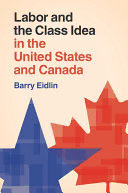
Labor and the Class Idea in the United States and Canada PDF
415 Pages·2018·3.326 MB·English
Most books are stored in the elastic cloud where traffic is expensive. For this reason, we have a limit on daily download.
Preview Labor and the Class Idea in the United States and Canada
Description:
Why are unions weaker in the United States than in Canada, despite the two countries’ socioeconomic similarities? Many view this crossborder distinction as a by-product of longstanding differences in political cultures and institutions. However, using detailed archival and statistical data, I find that this divergence is relatively recent, the result of different ruling-party responses to working-class upsurge in both countries during the Great Depression and World War II. In Canada, a hostile state response led to labor being incorporated as a class representative. In the United States, a co-optive state response led to labor being incorporated as an interest group. This embedded the“class idea” – the idea of class as a salient, legitimate political category –more deeply in Canadian policies, institutions, and practices than in the United States. I illustrate this through comparative studies of party–class relations, the effects of postwar Red Scares, and labor policy divergence. In each case, different patterns of political incorporation enabled or constrained labor’s legitimacy and organizational capacity in different ways. Canadian labor’s role as a class representative legitimized it and expanded its organizational capacity, while US labor’s role as an interest group delegitimized it and undermined its organizational capacity. As a result, union density remained more stable in Canada, but collapsed in the United States.
See more
The list of books you might like
Most books are stored in the elastic cloud where traffic is expensive. For this reason, we have a limit on daily download.
